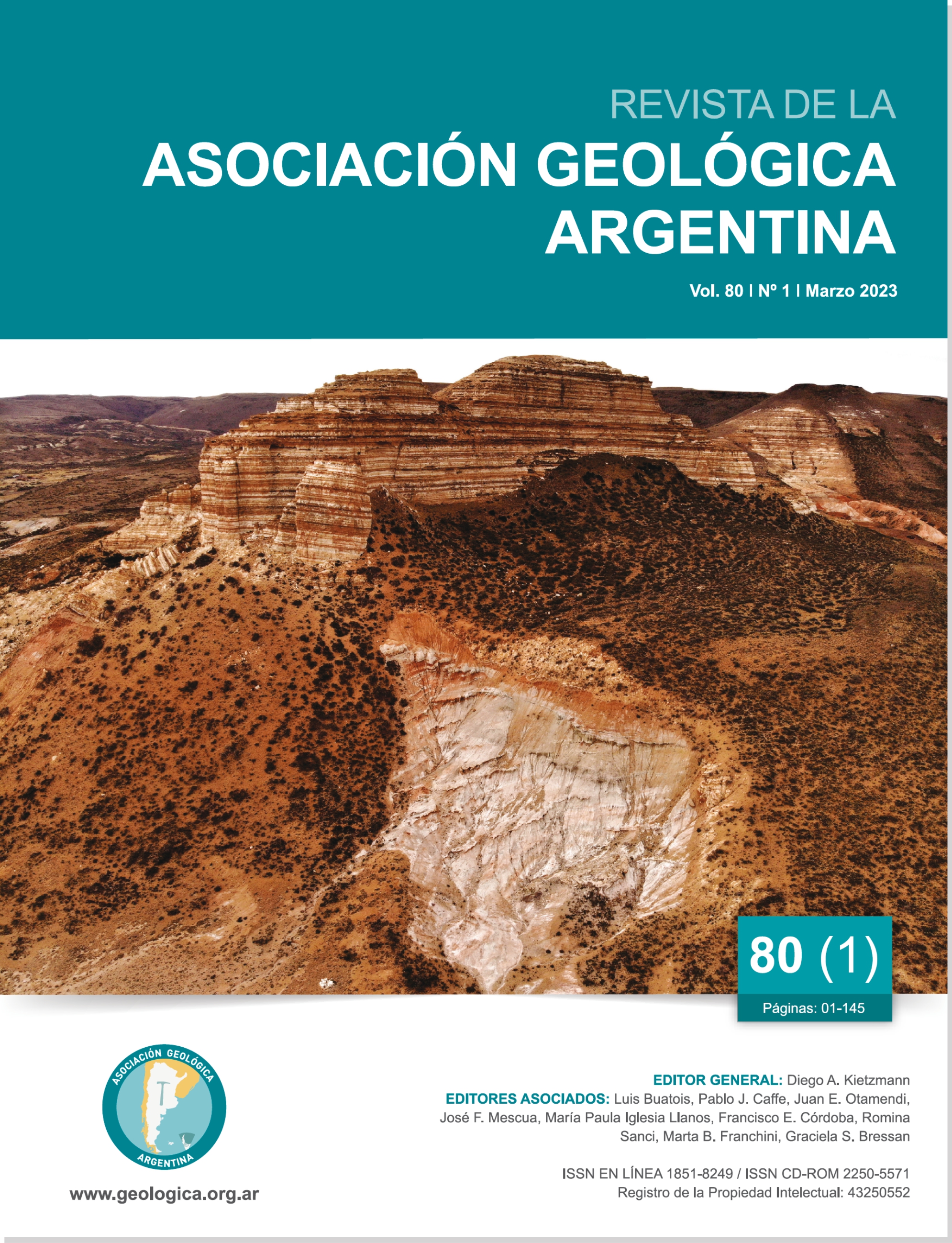Thermotectonic influences of the La Escalerilla Granite on the structural control of the tungsten veins of the San Román and La Puntana mines (La Carolina, San Luis, Argentina)
Main Article Content
Abstract
The tungsten-bearing veins of San Román and La Puntana mines constitute a series of quartz biextended bodies along about two km with potencies of the sub metric order that were exploited between the 40s and 70s through trenches and subsurface works. They are arranged in parallel on the contact of the metamorphic host of the San Luis Formation with the La Escalerilla Granite assigned to the lower Paleozoic, both units of the crystalline basement of the Sierra de San Luis. It is proposed that volumetric changes occurred during its late emplacement favored thermotectonic phenomena linked to the structural control of the mineralization by developing potential spaces subparallel to the vicinity of its controlled contact by the pre-existing planar anisotropies of its shale host rocks. In addition, the differential thermal contraction of the quartz during the passage from b to a, with respect to the other mineralogical constituents of the granite dome, produced during its cooling, a decrease in pressure with boiling of the pneumatolytic hydrothermal fluids enriched in immiscible elements. This mechanism generated in the domes of the La Escalerilla granite porosity and the concentration of fluids enriched in tungsten that migrated towards the overlying veins with a significant absence of greissinification and pegmatization. It is proposed that the power of the veins is related to the volumetric decrease of the intrusive throughout its contact and that they tend to thin out as they move away from the contact of the intrusive body.
Article Details

This work is licensed under a Creative Commons Attribution-NonCommercial 4.0 International License.
Nota de copyright
Los autores conservan los derechos de autor y garantizan a la revista el derecho de ser la primera publicación del trabajo licenciado según una licencia de atribución Creative Commons que permite a otros compartir el trabajo con el reconocimiento de la autoría y de la publicación en la que se publicó por primera vez.
Declaración de privacidad
Los nombres y direcciones de correo electrónico introducidos en esta revista se usarán exclusivamente para los fines declarados por esta revista y no estarán disponibles para ningún otro propósito u otra persona.

